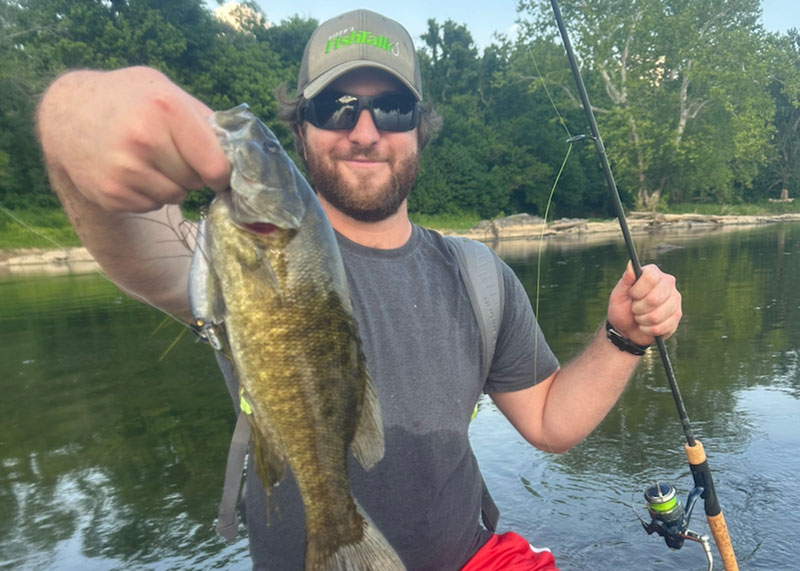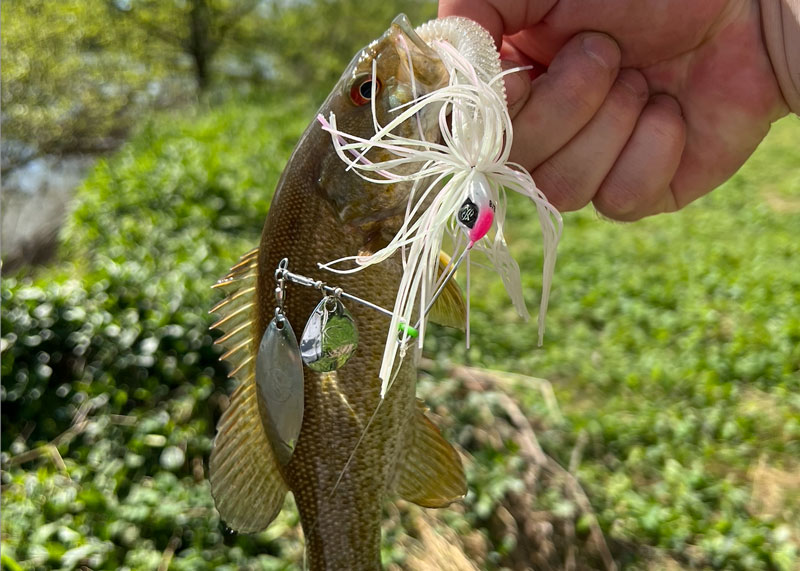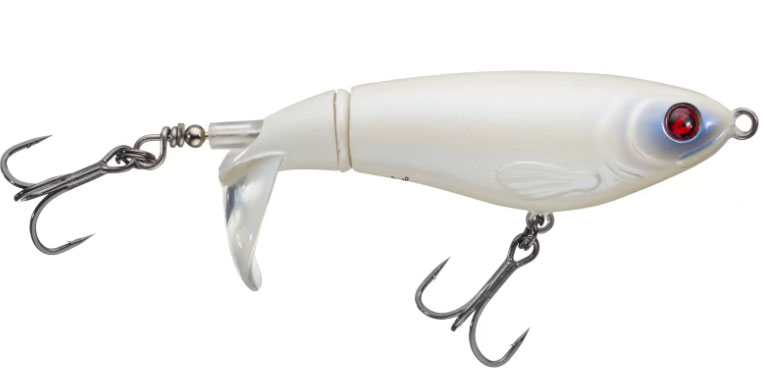If you’ve never been waist deep in a river battling with an angry smallmouth bass as he barrels his way downstream, don’t fret. In just a few minutes, you’ll have everything you need to start wade-fishing for smalljaws. Smallmouth bass are not only one of America’s most sought-after freshwater gamefish, but one of my favorites to target as well. With their oval body shape, bronze backs, and vertical black bars and/or spots, these fish are as gorgeous as they are feisty. They smash lures with a purpose and rip drag with a vengeance. But, perhaps the coolest part about these fish is how often they jump while hooked. An acrobatic smallie on the line is enough to get any anglers’ adrenaline pumping. What’s more, smallmouth bass are accessible to nearly everyone. No boat is needed, just your own two feet. Let’s take our first step into the river and get pumped to wade-fish for smallies.

Wade Fishing Safety
In whichever river you choose to start wading, understanding the potential risks and how to manage and prevent them is paramount. First and foremost, it is highly advised to wear a personal flotation device (PFD) in fast-flowing water. River currents can get nasty, and one wrong step may suck you into an undertow. Something low profile like a self-inflating PFD works well, as it’s lightweight and won’t restrict movement.
While not always necessary in the summertime when the air is hot and the water is refreshingly cool, some situations—like in spring or fall—may call for you to strap on a pair of waders. A wading belt is an essential addition to your outfit. If you slip and your waders fill up with water, the weight may pull you down beneath the surface and cause an immediate risk of drowning. A wading belt is a strap that goes around your body, somewhere between the waist and middle torso, and cinches the waders tight. This will prevent your waders from filling up should you take a spill.
It's likely you’ll want to bring a backpack of some sort to store your tackle, snacks, and whatever else you may bring on a fishing outing, and a first aid kit is a pivotal piece of equipment that should be packed every time. Stash it in a waterproof bag along with your cell phone.
A few more safety precautions to take when wading any river: test before you invest, listen to your gut, and leave a “float” plan. Always make sure to check the stability of whatever rock, log, or mud flat you plan to walk over before you invest your full body weight and risk falling. Use one foot to see if it’s a stable place to walk, then decide whether or not to proceed. Your decision making should be influenced by your gut feeling. It’s an instinct humans have had for all of our existence, so if your gut tells you “danger, danger!” do not disobey. Finally, leave a plan with a trusted friend or family member as to where you’re going and when you plan to return. That way, if anything does happen to you, someone will know where to send help.
Smallmouth Bass Gear and Tackle
Social media and the professional bass industry will tell you that there are 20 different rods to have for 20 different tactics or techniques, but when wade-fishing this is simply impractical. I like to carry a single 7’0” to 7’6” spinning rod with medium or medium-light power and fast or extra-fast action. The long rod will give you a boost in casting distance, which is great for covering water you may not be able to reach due to depth, ripping current, or other hazards. The selected rod power will be extremely versatile and allow you to throw both light lures like Ned rigs and heavier topwaters, while the faster action will allow for utmost sensitivity when bouncing jigs or crankbaits over rocks. A 2500 size spinning reel spooled up with eight- or 10-pound braid is ideal, with an eight- to 12-pound fluorocarbon leader.

There’s a plethora of lures that one can use to trick a smallmouth bass. One of the most effective and easy to fish is the spinnerbait. The flashing blades and flaring skirt are an irresistible presentation. A similar but more compact option is a chatterbait. Both can be fished using a straight retrieve, but don’t be afraid to add some erratic action by sweeping or popping your rod tip.
When fish are holding closer to the bottom, a finesse jig or Ned rig is the best bet. Pair both with a soft plastic craw or creature bait, and slowly drag or hop the lure along the bottom mixing in occasional pauses. A green pumpkin color works great in clear water, and dark colors like black do well in dirtier water.
Lipped baits like square-bill crankbaits and suspending jerkbaits are also classic offerings for smallies, especially over rocky bottom. Cast out the crankbait and burn it back, pausing each time you feel it bump a rock. That pause will allow the bait to float over the potential snag, and oftentimes this is when the fish strike. Jerkbaits are best for when the bass start to get finicky, or when the water is cooler in spring or fall. Start off with a few turns of the reel to get the lure down to its running depth, then begin a twitch-twitch-pause cadence. Some days they’ll want to chase, and a one- to three-second pause does the trick. Other times, however, smallies want to eat with their eyes first. Use a longer pause (up to 30 seconds) and allow that plug to suspend in the water column. Look at a bird, check your phone, pick your nose, whatever—but hold on tight because at any minute that fish might decide your jerkbait is a decent enough snack.
Finally, and perhaps most exciting, is topwater lures. One of the easiest to fish is a plopper. These lures are cigar-shaped and equipped with a propeller at the back, allowing them to make a “plopping” sound as they’re pulled in on a steady retrieve. Early morning, dusk, and overcast days are best for these surface baits, and the way a smallmouth blasts out of the water to eat one is simply incredible.

Where to Catch Smallmouth Bass
The non-tidal portions of Bay tribs like the Susquehanna, Potomac, and James Rivers are prime smallmouth waters, and most of the rivers west of I95 that are larger than a creek will have some level of smallmouth population. Areas that are lush with grass and peppered with boulders are prime.
The key to finding fish while wading is to look for structure. Vegetation is a great place to target with a chatterbait or plopper. Bring your lure along the edge of the grass line where a hungry smallie will be waiting to pounce. Eddies or areas where current goes from fast to slow above rocky bottom are great places to throw a crankbait or spinnerbait. Cast upstream and make sure to reel fast enough to keep up with the moving water. If you find isolated boulders, make a few casts with your jig or Ned rig, making sure to let it sit on the bottom for a moment before you start hopping or dragging.
Be safe, have fun, and go immerse yourself in the magic of wading for smallmouth bass—it’s an angling experience you won’t forget!
-By Adam Greenberg